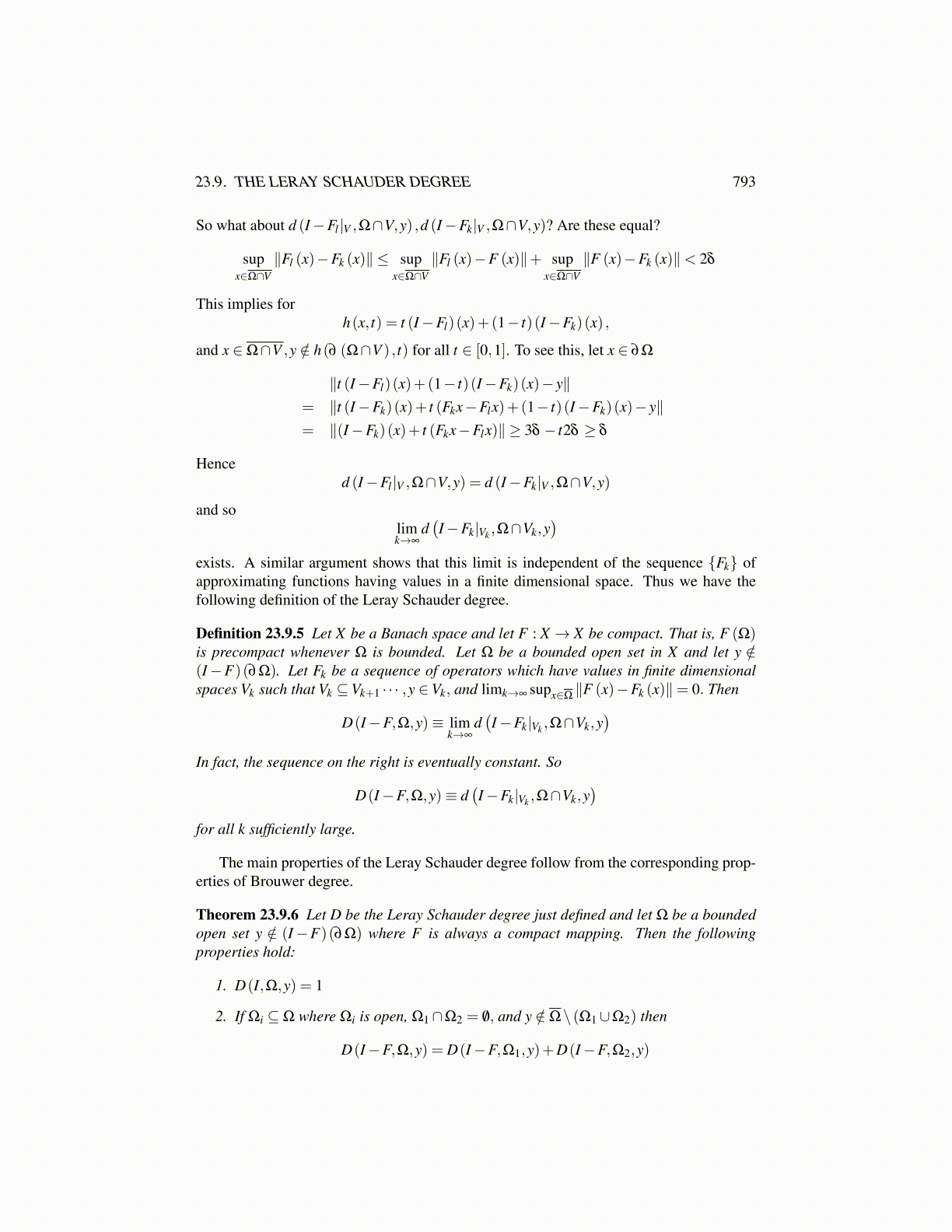
23.9. THE LERAY SCHAUDER DEGREE 793
Note that this impliesdist(y,(I−Fk)(∂ (Ω∩V )))> 3δ
for any subspace V . If k < l are two such indices, then consider
d(I−Fk|Vk ,Ω∩Vk,y
),d(I−Fl |Vl ,Ω∩Vl ,y
)Are they equal? Let V =Vk +Vl . Then by Theorem 23.8.4,
d(I−Fl |Vl ,Ω∩Vl ,y
)= d (I−Fl |V ,Ω∩V,y)
d(I−Fk|Vk ,Ω∩Vk,y
)= d (I−Fk|V ,Ω∩V,y)
So what about d (I−Fl |V ,Ω∩V,y) ,d (I−Fk|V ,Ω∩V,y)? Are these equal?
supx∈Ω∩V
∥Fl (x)−Fk (x)∥ ≤ supx∈Ω∩V
∥Fl (x)−F (x)∥+ supx∈Ω∩V
∥F (x)−Fk (x)∥< 2δ
This implies forh(x, t) = t (I−Fl)(x)+(1− t)(I−Fk)(x) ,
and x ∈Ω∩V ,y /∈ h(∂ (Ω∩V ) , t) for all t ∈ [0,1]. To see this, let x ∈ ∂Ω
∥t (I−Fl)(x)+(1− t)(I−Fk)(x)− y∥= ∥t (I−Fk)(x)+ t (Fkx−Flx)+(1− t)(I−Fk)(x)− y∥= ∥(I−Fk)(x)+ t (Fkx−Flx)∥ ≥ 3δ − t2δ ≥ δ
Henced (I−Fl |V ,Ω∩V,y) = d (I−Fk|V ,Ω∩V,y)
and solimk→∞
d(I−Fk|Vk ,Ω∩Vk,y
)exists. A similar argument shows that this limit is independent of the sequence {Fk} ofapproximating functions having values in a finite dimensional space. Thus we have thefollowing definition of the Leray Schauder degree.
Definition 23.9.5 Let X be a Banach space and let F : X → X be compact. That is, F (Ω)is precompact whenever Ω is bounded. Let Ω be a bounded open set in X and let y /∈(I−F)(∂Ω). Let Fk be a sequence of operators which have values in finite dimensionalspaces Vk such that Vk ⊆Vk+1 · · · ,y ∈Vk, and limk→∞ supx∈Ω
∥F (x)−Fk (x)∥= 0. Then
D(I−F,Ω,y)≡ limk→∞
d(I−Fk|Vk ,Ω∩Vk,y
)In fact, the sequence on the right is eventually constant. So
D(I−F,Ω,y)≡ d(I−Fk|Vk ,Ω∩Vk,y
)for all k sufficiently large.